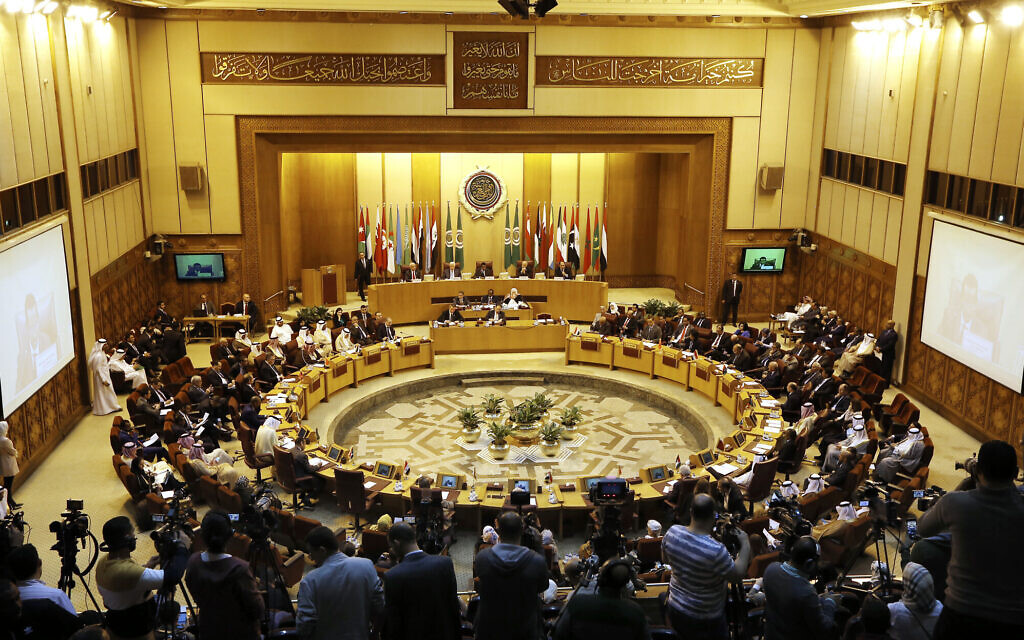What the Arab League should tell the US
https://arab.news/rfxes

An emergency session of the Arab League on Saturday will discuss the Trump Mideast peace plan — a proposal unveiled at the White House in the presence of Israeli Prime Minister Benjamin Netanyahu but without any Palestinian or Arab leader present. The Arab position on this issue must be clear without being bombastic.
US Secretary of State Mike Pompeo has said that if Palestinians reject the US plan, “they should make a counter offer.”
Arabs, including Palestinians, have made an offer and are still awaiting a reply.
The Arab Peace Initiative passed at the Beirut summit in 2002 is a fair, reasonable and just plan that provides an acceptable solution to the longstanding Arab-Israeli conflict. That plan acknowledges international law, makes a reasonable peace offer to the Israelis, and must continue to be the accepted and principled position of the Arab world.
According to the plan, Arabs will normalize relations with Israel in return for its withdrawal from all Arab areas occupied in 1967 and an agreed resolution of the Palestinian refugee problem. The Arab world has unanimously supported this plan, and the Organization of Islamic Countries has also added its support.
It is not difficult for the Arab League to declare that Arabs will agree to any reasonable deal that Palestinians accept and reject any unreasonable deals that Palestinians refuse.
The US plan has been rejected by a wide-ranging number of Palestinians. Political leaders from all factions, popular movements and everyday Palestinians have all said no to this one-sided plan. In fact, the US has managed to reunite Palestinians in opposition to his policy as was demonstrated on Tuesday when representatives of Hamas and Islamic Jihad joined forces with the Palestinian leadership to unanimously oppose the plan. Palestinian President Mahmoud Abbas also agreed to attend a national unity dialogue meeting in Gaza.
By reiterating the Arab peace plan and standing in solidarity with Palestine, the Arab League should ensure that Palestinians are not left to deal with this issue alone. To be consistent with its own policies and direction, the league must provide a safety net for Palestinians that also protects the Palestinian leadership regardless of its political position. In addition, the league needs to provide an economic safety net for Palestinian people to help ease the sacrifice they will face for supporting a position endorsed by all Arabs and Muslims.
While it is important that Palestinians make their views clear, and for their Arab brothers and sisters to support them, it is critical this opposition avoids acts of violence that will divert attention from the principled positions that must be publicly declared and reiterated.
The Arab response needs to be focused on Palestinian and Arab rights rather than dealing directly with some of the outlandish comments made in the US plan.
Daoud Kuttab
The Arab response needs to be focused on Palestinian and Arab rights rather than dealing directly with some of the outlandish comments made in the US plan.
It is important to understand that this agreement is directly connected to the Israeli elections in March and possibly even the November US poll. There is no need to stir the pot. It is important to stay on principle without screaming or shouting. A long-term strategic process is needed — not simply a quick fix, but a clear agreement and a unified effort that can bring peace and justice through a framework based on international law.
- Daoud Kuttab is a former professor at Princeton University and the founder and former director of the Institute of Modern Media at Al-Quds University in Ramallah. Twitter: @daoudkuttab









































